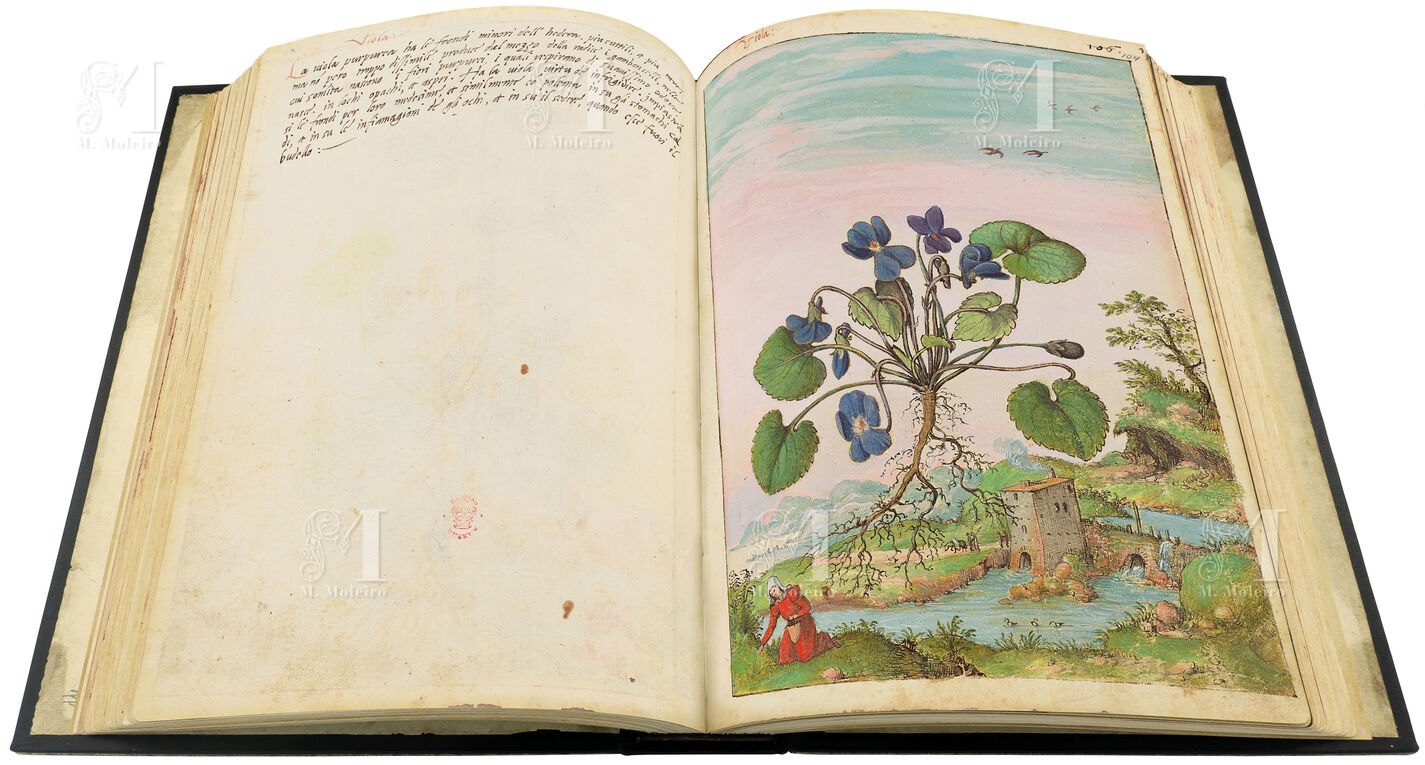
The sweet violet has leaves smaller than those of ivy, thinner and darker but not otherwise dissimilar. From the middle of its root grow its little stalks, at the top of which are the violet flowers, which give a very sweet scent. It grows in shady and unfrequented places. The violet has cooling properties. The leaves, alone or with polenta, are applied as a poultice to heated stomachs, inflamed eyes and to the rectum in cases of prolapse. (f. 103v)
This plant grows in meadows and around forests in most of Europe and flowers very early. It contains an alkaloid, saponins and salicylic acid, and also essential oil and mucilages. It has expectorant properties and stimulates the secretion of mucus, making it good for coughs, colds and pharyngitis. It also lowers blood pressure. It is used for arthritis, particularly in the fingers. This species has been extensively studied in herbal medicine on account of its use in folk medicine. Violet perfume was one of the most expensive until the chemical compound that produces its aroma was synthesized.
Ramón Morales Valverde
Real Jardín Botánico de Madrid
(Extract from the commentary volume of Mattioli's Dioscorides illustrated by Cibo)